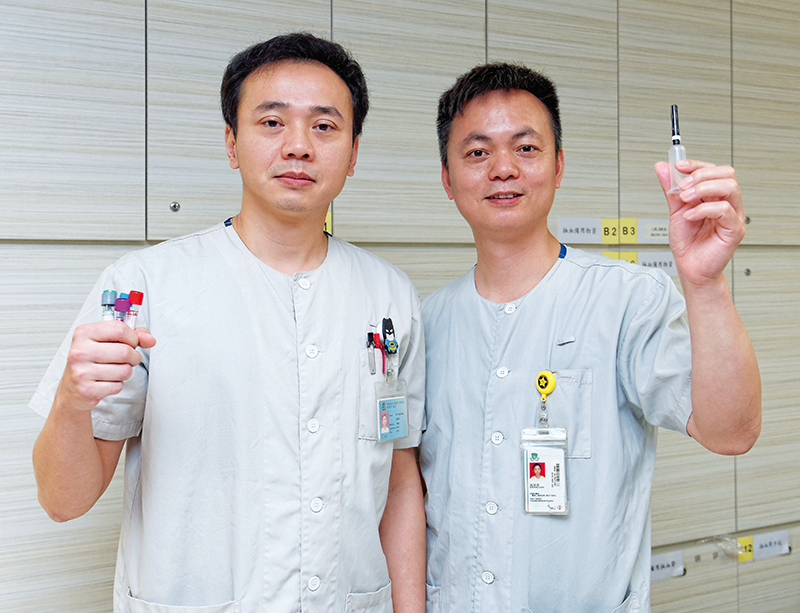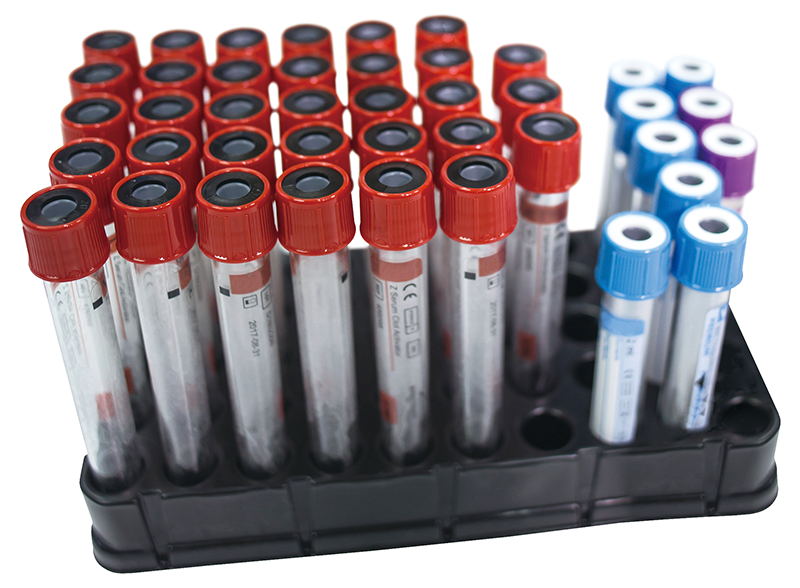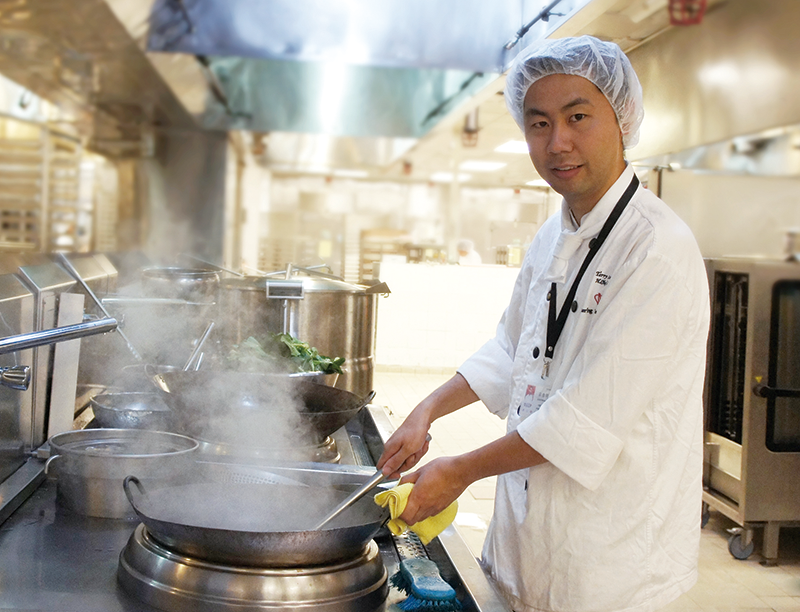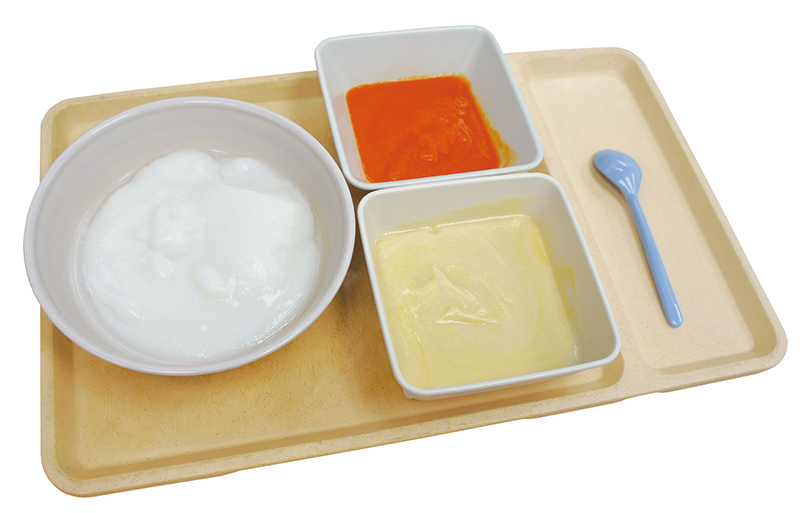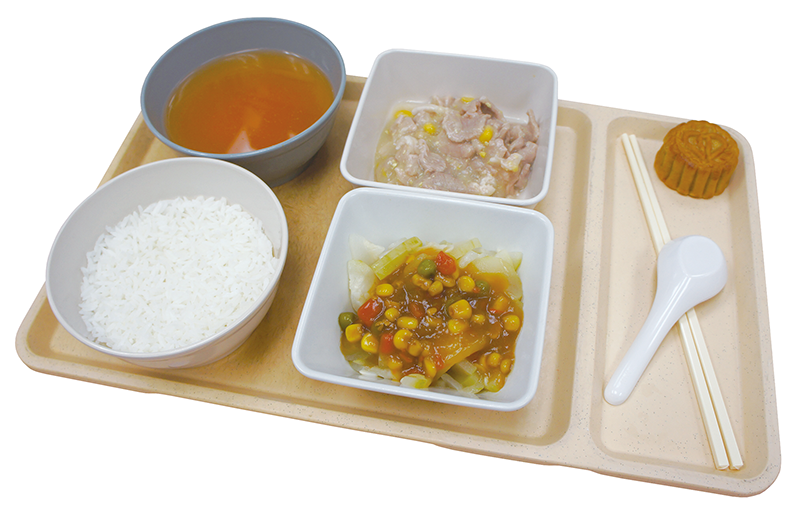Love and care behind-the-scene
Doctors, nurses and allied health workers are a common sight in our daily efforts in safeguarding people’s health – but behind the scenes, there is a dedicated and sometimes overlooked crew of supporting staff who serve patients with passion and make a difference to patient’s journey. HASLink spoke to some of them to learn about their different roles in hospitals.
Lifeblood of patient care
Sze King-chun / Sze Hung-wing
Patient Care Assistant I (Clinical Assistant Coordinator)
Princess Margaret Hospital
Sze King-chun and Sze Hung-wing have both been working as phlebotomists in Princess Margaret Hospital for more than a decade. They draw blood, examine blood culture, check electrocardiogram, and place intravenous catheters on patients. Working in three shifts with four to ten phlebotomists on duty in each shift, they assist in patient treatment by taking blood samples from patients for test and analysis. Phlebotomists are meticulous about every procedure, from checking patient ID to ensure accuracy of samples, to comforting them to reduce anxiety as far as possible.
King-chun and Hung-wing also assist their supervisors in handling administrative work such as shift arrangement and service efficiency monitoring. In addition, they train newcomers, teach them blood taking techniques and help them adapt quickly to the working culture and operate independently by sharing tips with them on handling children, elderly patients, and the chronically sick.
In the early days when the phlebotomist team was set up, there were only two phlebotomists per each night shift. King-chun remembers once working alone on one shift when his colleague was sick. He spent the entire night rushed off his feet as he drew blood for patients throughout the hospital but still managed to follow patients’ priority and keep on top of his hectic solo schedule. Today, service has improved with at least four phlebotomists on each night shift.
Hung-wing first worked as a ward assistant but later developed his career through training as a phlebotomist. He is now proud to tell his family that he has a meaningful job which makes a crucial difference to patient’s treatment and recovery.
Chef brings art of fine dining to hospital food
Terry Leung
Hospital Chef I
North District Hospital
Terry Leung had been a chef at the Peninsula Hong Kong for eight years. He has brought his talent in fine dining to his job as the hospital chef of North District Hospital in 2014, which produces 3.4 tons of food for 11 public hospitals a day including all seven hospitals of the New Territories East Cluster, as well as Grantham Hospital, Kwong Wah Hospital, Wong Tai Sin Hospital and Yan Chai Hospital.
Having worked as a chef since the age of 18, Terry always believes that healthy food can also be appetising. “No food is unhealthy,” he says. “To get patient meals right, we must weigh up the texture, quantity and proportion of different nutrients in each dish.” He takes the dish chicken wings in soya sauce as an example.“Working with dietitians, we do nutrition analysis and study the best cooking methods,” he explains. “Of course, it would be too salty to marinate 20kg of chicken wings in one litre of soya sauce. But if you marinate 40kg of chicken wings in one litre of soya sauce, it comes out just right.” His team constantly improves the taste of dishes they prepare and the cooking methods to keep meals tasty and appealing and has introduced techniques such as seasoning food with five-spice powder, flavour pairings of different natural ingredients, vacuum cooking, and slow cooking to retain moisture and texture of food.
Appetite for and enjoyment of food vary among patients whose senses of taste and smell are affected by medicine and treatment, and patients are sometimes surprised by dishes with lobster sauce or topped with Taiwan-styled braised meat. “We improve the seasoning ratio of the sauce and add more vegetables as side dish,” Terry says. “This not only tantalises patients’ palates, but also achieves a balanced diet with ‘three low and one high’ as the rule of thumb.”
Special meals for patients with different needs and demand are part of our daily routine. Pureed meals are prepared for patients who have difficulty chewing, Halal meals and vegetarian dishes for Muslims, and low-fibre meals for patients before examinations and diagnoses. Terry and his colleagues revamp the patient menu annually and are currently planning to add mashed potato into pureed meals to make them even tastier.
● Pregnancy with peace of mind
COVER STORY
● Tech breakthrough brings two new prenatal tests
● Lesser-known perspectives of DNA testing
WHAT'S NEW
● Avoid outbreak of Candida auris in hospital
FEATURE
● Love and care behind-the-scene (1)
● Love and care behind-the-scene (2)
● A happy homecoming for a Russian patient stranded far from home
PEOPLE
● A pathologist’s illuminating journey through the world of light art
● Two essentials for a good show
HELEN HA
● HR App keeps HA retirees connected
● Quick registration and payment through one-stop electronic kiosks
● Henry Fan will be the new leader of Hospital Authority
STAFF CORNER
● 生命的圖騰 (Chinese version only)
● Cluster re-delineation compared to Exodus
● New director vows to build a strong team

